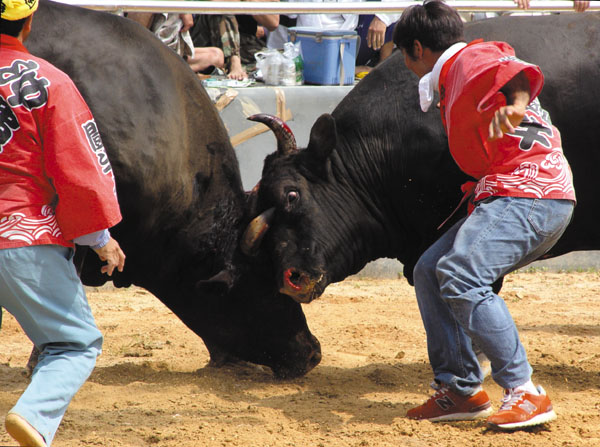What Is Bull Fighting Details
The tradition, as it is practiced today, involves professional toreros (also called matadors) who execute various formal moves which can be interpreted and innovated according to the bullfighter's style or school. It has been alleged that toreros seek to elicit inspiration and art from their work and an emotional connection with the crowd transmitted through the bull. Such maneuvers are performed at close range, which places the bullfighter at risk of being gored or trampled. After the bull has been hooked multiple times behind the shoulder by other matadors in the arena, the bullfight usually concludes with the killing of the bull by a single sword thrust, which is called the estocada. In Portugal, the finale consists of a tradition called the pega, where men (forcados) try to grab and hold the bull by its horns when it runs at them.
Supporters of bullfighting argue that it is a culturally important tradition and a fully developed art form on par with painting, dancing and music, while animal rights advocates hold that it is a blood sport resulting in the suffering of bulls and horses.
There are many historic fighting venues in the Iberian Peninsula, France and Hispanic America. The largest venue of its kind is the Plaza México in central Mexico City, which seats 48,000 people, and the oldest is the La Maestranza in Seville, Spain, which was first used for bullfighting in 1765.
The tradition, as it is practiced today, involves professional toreros (also called matadors) who execute various formal moves which can be interpreted and innovated according to the bullfighter's style or school. It has been alleged that toreros seek to elicit inspiration and art from their work and an emotional connection with the crowd transmitted through the bull. Such maneuvers are performed at close range, which places the bullfighter at risk of being gored or trampled. After the bull has been hooked multiple times behind the shoulder by other matadors in the arena, the bullfight usually concludes with the killing of the bull by a single sword thrust, which is called the estocada. In Portugal, the finale consists of a tradition called the pega, where men (forcados) try to grab and hold the bull by its horns when it runs at them.
Supporters of bullfighting argue that it is a culturally important tradition and a fully developed art form on par with painting, dancing and music, while animal rights advocates hold that it is a blood sport resulting in the suffering of bulls and horses.
There are many historic fighting venues in the Iberian Peninsula, France and Hispanic America. The largest venue of its kind is the Plaza México in central Mexico City, which seats 48,000 people, and the oldest is the La Maestranza in Seville, Spain, which was first used for bullfighting in 1765.
What Is Bull Fighting
What Is Bull Fighting
What Is Bull Fighting
What Is Bull Fighting
What Is Bull Fighting
What Is Bull Fighting
What Is Bull Fighting
What Is Bull Fighting
What Is Bull Fighting
What Is Bull Fighting
What Is Bull Fighting
What Is Bull Fighting












Packers And Movers Chennai
ReplyDeletePackers And Movers Gaudiyamath Road Chennai
Packers And Movers Golluvar Agraharam Road Chennai
Packers And Movers Gopalapuram Chennai
Packers And Movers Government Estate Chennai
I do consider all the ideas you have presented on your post. They're really convincing and will certainly work. @ Packers And Movers Gurgaon
ReplyDelete